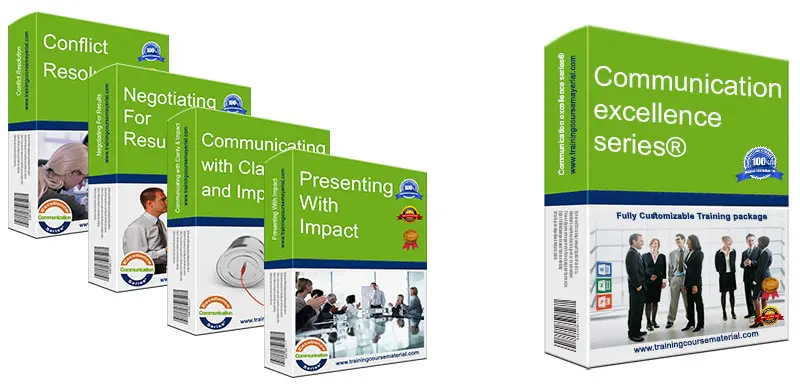Appearance, Attitude & Body Language
Usually when we meet a smartly and professionally dressed person we get a positive impression of that person. If they look tidy and organised, we tend to make the assumption that they work in the same manner as well. However, when we meet someone who is carelessly dressed and looks scruffy and untidy, we usually think they are unprofessional and we assume that their work quality will be as unprofessional as they look. We are not saying that first impressions are always true but they are definitely very important specially when you are delivering a presentation.
See if you can think of it this way; you are your presentation. What impression will your audience form of you as you begin your presentation? Be aware that you can influence that impression and build this into your planning and preparation.
Your Attitude
Your attitude is a key factor in creating a great positive first impression, Have a positive attitude full of energy and enthusiasm, people are generally attracted to positive and enthusiastic people, remember positive energy and enthusiasm are infectious, if you are enthusiastic and energetic about your topic , they will be enthusiastic to listen to you as well.
Clarity of objectives
One of the key things you need to do to get instant buy-in of your audience and create a good first impression is to give them a roadmap of your presentation at the beginning, very briefly state the objectives of your presentation preferably using bullets listing the main topics and clarifying what's in it for them and make it clear why then need and how they will benefit from listening to you.
General Manner and body language
- Don't be tempted by manual props (pens, pointers, spectacles..etc.)
- Don't keep loose change in your pocket, this can be distracting both to you and your audience.
- Be aware of your verbal ‘tics’ and work on eliminating them (e.g.'OK!' – 'You know' – 'and so forth' – 'Now ...' -' you see')
- Watch out for furniture!
- Avoid 'closed' or tense body positions
- Don't worry about pacing, leaning etc
- Check your hair/tie/trousers/dress/zippers ..etc.
Using your Eyes
To make a good impact and a powerful presentation, you need to use your eyes properly and make eye contact with everyone in your audience, the following are two very helpful techniques that can help you do just that.
One Thought Technique
Before speaking, establish eye contact with one person. Complete one thought with that person. Pause briefly and take a breath while making eye contact with another person. Complete one thought with that person. Repeat this process throughout your presentation. Using this technique will help you control your nervousness and think more clearly and also helps you control your rate of speech, it also helps you avoid looking at the ceiling, floor or walls for your thoughts.
Scanner Technique
Scan the audience with your eyes, staying only 2-3 seconds on each person – unless in dialogue.
This will give each participant the impression that you are speaking to him/her personally and ensure attention, sweeping the room this way ensures you establish eye contact with everyone forcing all your audience to stay attentive. Above all, avoid looking at one (friendly looking) member of the audience or at a fixed (non-threatening) point on the wall or floor.
USING YOUR VOICE
Projection Speak louder than usual; throw your voice to back of room
Articulation Don’t swallow words. Beware of verbal ‘tics’
Modulation Vary tone and pitch; be dramatic, confidential and/or triumphant
Pronunciation Watch tonic accents; check difficult words
Enunciation Over emphasize. Accentuate syllables
Repetition Repeat key phrases with different vocal emphasis
For more presentation skills, check out our "Presenting With Impact" instant download training package.
Presenting with Proximity, Passion & Participation - Present with impact
presentation skills - If your aim in giving a presentation is just reciting information while others are listening to you passively, this traditional presentation mode is the easy way, and it doesn’t work. It’s ineffective. If your ultimate goal is to teach, inspire, and motivate an audience, if you want them to change, if even a tiny bit, then there has to be engagement between you and your audience.
When there is no engagement, there is no change. True engagement assumes some level of emotional involvement or commitment on the part of both the presenter and the audience—but the responsibility to light the fire of engagement lies primarily with you, the presenter. There are three key ways to establish this connection and engage with audience using passion, proximity and participation.















